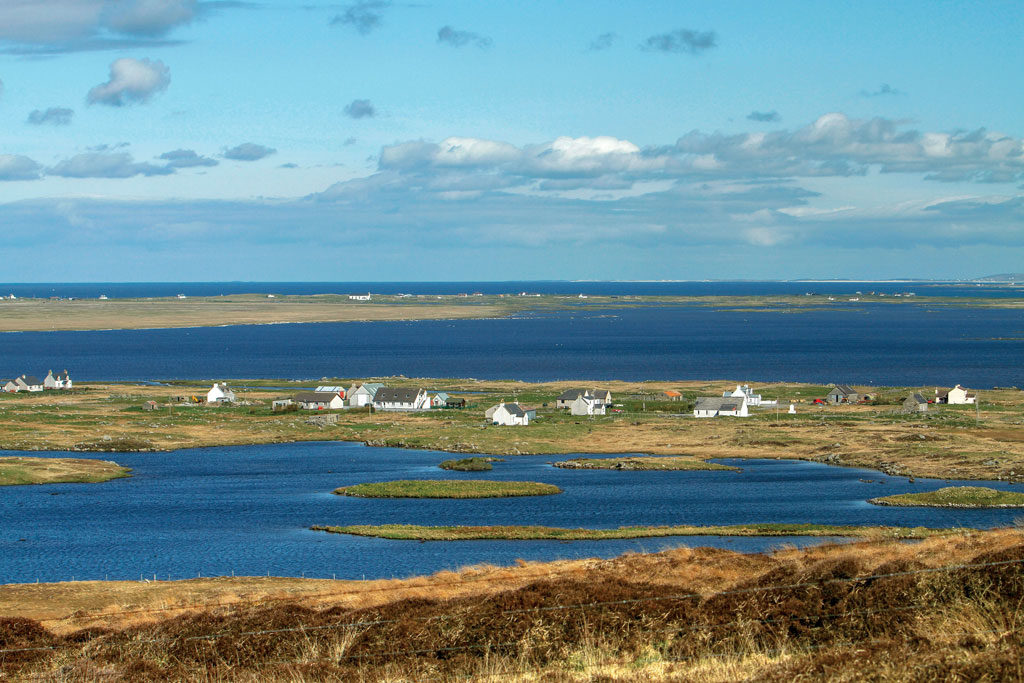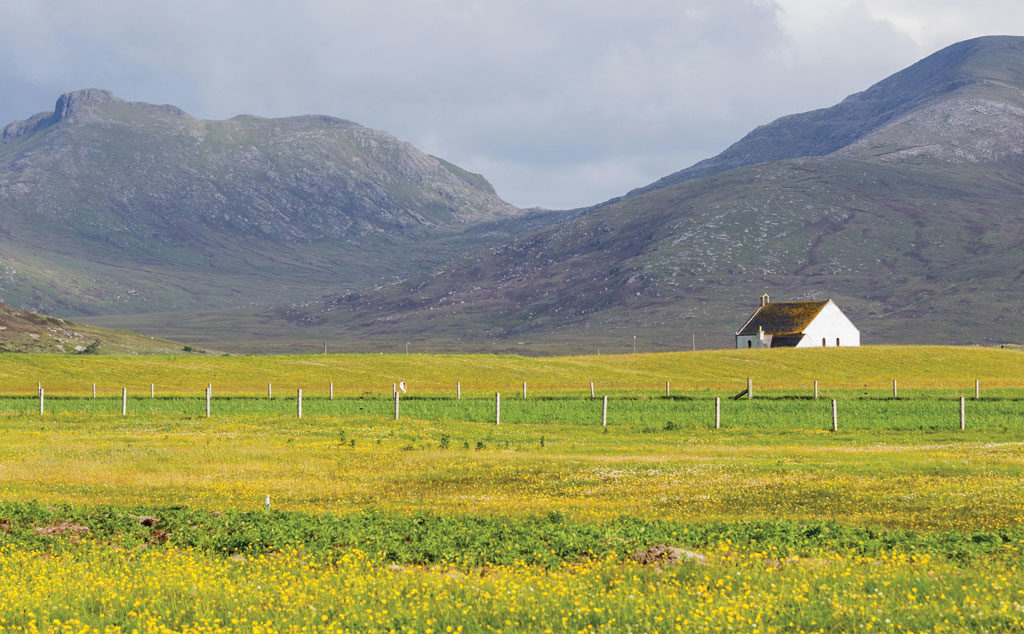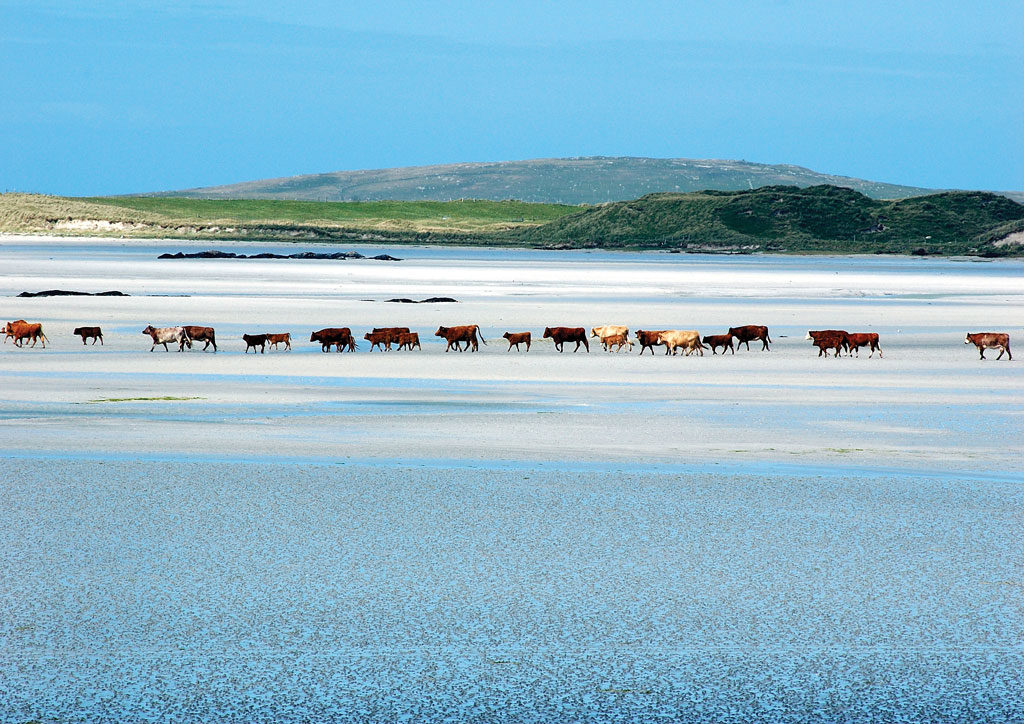What is life as a crofter really like? We travel to the Hebridean isle of Uist to find out
MORE FROM SCOTLAND MAGAZINE
Crofts are small farms, enshrined and protected in Scottish law. Many are passed down through generations of the same family. However, at the mercy of the seasons and elements, crofting is not an easy life. I wanted to find out more about the people who choose to continue these centuries-old traditions, so I travelled to Uist where an active community of crofters lives.
The islands of North and South Uist, in the Outer Hebrides off the west coast of Scotland, are linked by causeways across the Isle of Benbecula and Grimsay. Dotted with picturesque beaches on their edges and rugged hills to the centre, the islands are strongholds of rural life.
I’m travelling on the ferry from Oban on the Scottish mainland to Lochboisdale on South Uist and four hours on a bumpy crossing underlines the isolation of the islands.

As the ferry pulls into the small harbour, experienced passengers scarcely wait for the boat to stop moving before they hop onto land. Somewhat wobbly after the crossing, I drive carefully off the ramp and head to my first stop of Kildonian Museum.
The museum has artefacts covering the cultural history of Uist, including the history of crofting. There’s a lot to look at, as the islands have been inhabited for over 5,000 years.
With the emphasis on history, I wonder if crofting is a relic of the past: perhaps it’s dying out in the 21st century? David Muir doesn’t think so. David swapped an engineering career in Glasgow for raising livestock on Benbecula with his wife back in the 1970s. Now he’s a local representative for the crofting community. “There’s a mixture of born and bred crofters – like my wife’s family – and people new to the lifestyle like me,” David explains.
But David’s land isn’t productive enough to rely on as his only source of income. “For me it’s a sort of hobby. But there’s a whole spectrum of agriculture on Uist with very fertile land to the north and on the machair [a low-lying grassy plain],” he says.
Regardless of where the land is, crofting activities are linked to the seasons. In spring, lambing and calving keep everyone busy. On the fields, ancient local variants of oats, rye and barley are sown into soil enriched with seaweed. Unlike many modern farms, the crofters here keep back a portion of their seed at harvest to plant next year. This keeps costs down and – by natural selection – has created a variety of oats, rye, and barley that are smaller than those on the mainland and better adapted to the Uist climate. Summer focuses on caring for livestock and harvesting crops when ready. In autumn, cattle are given a health check and moved for winter grazing. Rams and sheep are herded up onto the fields to fend for themselves. Then in winter, bales of homegrown hay or silage are fed to the cattle. After winter storms, seaweed washed ashore is pulled by tractor onto the land to rot down before being ploughed into the soil.

Modern machinery may make some tasks more manageable, but similar methods of agriculture have been used here for centuries. “Using local materials like the seaweed cuts down on costs, but it is also environmentally friendly,” David says. “We could buy fertiliser, but that would be expensive. Besides, the seaweed is excellent for the soil, giving lots of nutrients. That’s why the machair is so fertile.” Although these traditions go back a long way, the focus on conservation and the environment is a critical concern for modern crofters.
Most crofters have other sources of income. Donald MacPhee lives on a family croft on Benbecula and says his family has been crofting since “the dawn of time.” This may be a little bit of an exaggeration, but David can name 11 past generations, all of whom had connections to crofts. Despite this rich heritage, David has always needed other work to make ends meet. He has been a builder, a firefighter – even a gravedigger. Today, he runs a B&B and a guest house, both converted from former croft houses, but he still works the land. “Crofting forms a small part of our income, but we don’t do it for the money,” David explains.
That’s a sentiment echoed by Beatrix Wood, whose croft on South Uist is also the base for her production company TrixPix Media. I ask if balancing her different careers is a challenge. “Sometimes, but often they fit together. When I travelled to the market to buy a ram, I also filmed an interview for a documentary. Of course crofting can be hard work, but it’s also a passion that’s shared by our close community.”

That’s another trend I’ve noticed on Uist – crofters join forces to help each other. “People are friendly and open here, we look out for each other,” says Beatrix. I notice this myself – whenever I pass another vehicle, the driver always waves. Soon I am waving back. It feels natural to be kind here.
Some of the other challenges faced by crofters come from wild animals. “Geese are a huge problem,” says Donald, “they eat the grains, and every year there’s more of them.” Greylag and barnacle geese used to stop briefly on their winter migration but in the 1980s most of the crows and ravens were shot because they attacked new lambs. “Unfortunately, if you mess with nature it comes back to bite you,” Donald adds.
Deer, only introduced to Benbecula in the 1960s, are also a problem. They have no predators on the island, so are increasing in numbers and eating all the grass intended for sheep grazing. Culling the geese and deer costs money, and right now all future funding is uncertain.
“We get funding from the EU, so we are worried about what will happen because of Brexit,” says David Muir. At the moment, crofters on Uist get support to farm in traditional ways, which has a positive effect on biodiversity, but at the cost of lower crop yields. The machair, in particular, is a precious area. “The machairs of Uist are renowned for their wildlife,” says RSPB officer Stuart Benn, “species like corncrake and the great yellow bumblebee are there, which are very rare, and that’s absolutely to do with the working practices of crofting.”
Beatrix Wood agrees, “We don’t have a large economic output, but the value we give to the environment is incalculable.” Although it has taken generations of crofters managing the machair sustainably to create its rich biodiversity, if techniques like using seaweed on the land stop, then the machair will quickly lose its fertility and rare wildlife.
Overall how do crofters feel about the future? “Sometimes I’m worried that the mainland doesn’t understand our concerns because life is so different out here,” says Beatrix, “we do need continued investment, and faster internet would be great. But overall my life here is wonderful. The weather is pretty good, and the scenery is stunning. I love the light here. The kindness of the people is like nowhere else.”
“Crofting can be a love/hate relationship,” Donald says with a chuckle, “but when I’m ploughing a beach-side field, and there’s a glorious sunset, the beauty can take your breath away. It’s a healthy life, and I feel lucky to live here.”
As my return ferry pulls out of the harbour I can only agree. Uist has a unique beauty and a calming effect on the soul. I only hope that the crofters can continue their traditions so that it stays happy and peaceful.
MORE FROM SCOTLAND MAGAZINE

SCOTLAND MAGAZINE
Published six times a year, every issue of Scotland showcases its stunning landscapes and natural beauty, and delves deep into Scottish history. From mysterious clans and famous Scots (both past and present), to the hidden histories of the country’s greatest castles and houses, Scotland‘s pages brim with the soul and secrets of the country.
Scotland magazine captures the spirit of this wild and wonderful nation, explores its history and heritage and recommends great places to visit, so you feel at home here, wherever you are in the world.